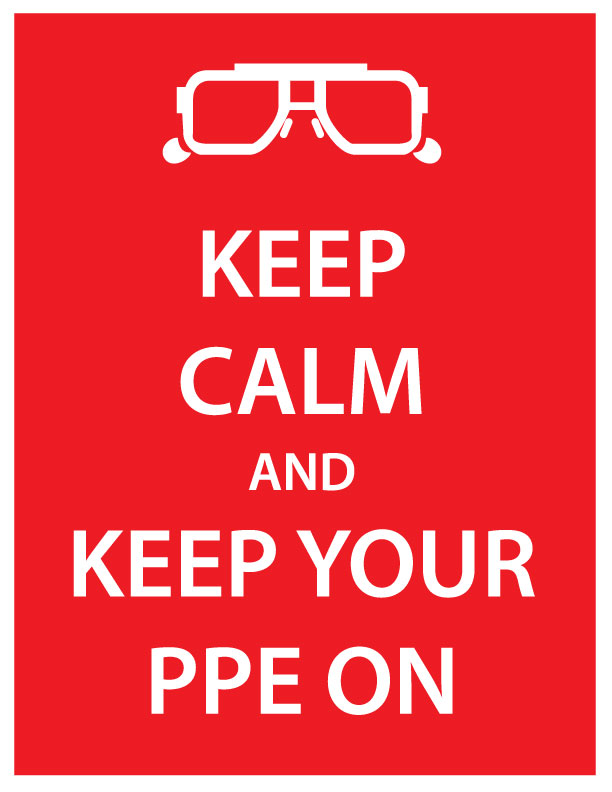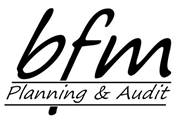Information
-
Document No.
-
Audit Title
-
Client / Site
-
Conducted on
-
Prepared by Abzal Ussenov
INTRODUCTION
SITE / WORKSHOP
-
Address
-
PHOTO
-
TECHNOLOGICAL PROCESS
-
WORKERS AMOUNT
1. GENERAL
1. HAZARDS & RISK ASSESMENT
-
1.1 What regulations are followed by the company ( EN, NIOSH, etc)?
-
1.2 Are performance standards (ie. ANSI or EN ) design requirements utilized?
-
1.3 Are specific internal standards present?
-
1.4 Risk assessments has been conducted?
-
1.5 Respiratory hazards
-
1.6 Noise hazards
-
1.7 Mechanical hazards
-
1.7.1 Choose mechanical hazards type
- Rotating, moving equipment
- Overhead loads, cranes
- Transport
- Vibration
- Other
-
1.8 Chemical hazards
-
1.8.1 Hazardous Substance Register complete and available?
-
1.8.2 Material Safety Data Sheets available?
-
1.8.3 Are eye washes and showers installed?
-
1.9 Electrical hazards
-
1.10 Heat exposure
-
1.11 High humidity
-
1.12 Biological hazads
2. PERSONAL PROTECTIVE EQUIPMENT
-
2.1 Formal PPE needs assessment program for both routine and non-routine tasks is at place?
-
2.2 PPE selected is based on the risk assessment? PPE selection process description
-
2.3 Is required PPE available/easily accessible?
-
2.4 Is specific training provided?
-
2.5 Are workers allowed to use their own PPE or only company supplied PPE?<br>
-
2.6 Is damaged PPE immediately removed from service and replaced?
-
2.7 Do cleaning/decontamination facilities exist?
-
2.8 Please enter PPE storage and service information
2. RESPIRATORY PROTECTION
-
RESPIRATORY HAZARDS
1 HAZARDS AND RISK ASSESSMENT
-
1.1 Has the work site been assessed for potential exposure to any airborne contaminants?
-
1.2 Has any other air monitoring been done?
-
1.3 Particulates exposure ( Dust, mist, fumes,fibers). Information on exposure type and level
-
1.4 Gas and Vapors exposure. information on exposure type and level
-
1.5 Risk of IDLH?
-
1.6 Is a written respirator program in place that includes: worker training, fit-testing and medical evaluation?
2 SELECTION
-
2.1 Respiratory PPE in use
-
2.1.1 Reusable
-
Currently used solution type
- Half face masks
- Full face masks
-
a) Cartridge change out procedure in place
-
b) Cartridge change frequency
-
c) Cartridge filter type
-
d) General information about currently used solution (pro's & con's)
-
2.1.2 Disposable
-
Currently used solution type
- Unvalved FFP1
- Unvalved FFP2
- Unvalved FFP3
- Valved FFP1
- Valved FFP2
- Valved FFP3
-
a) Respirator change frequency
-
b) General information about currently used solution (pro's & con's)
-
2.1.3 Powered & Supplied Air
-
Currently used solution type
- PAPR
- Airline (SAR)
- SCBA
- Escape
-
a) General information about currently used solution (pro's & con's)
-
2.2 What criteria was used to select the respirator type?
-
2.3 Any comfortability issues? Details
-
2.4 Any quality issues? Details
3 TRAINING
-
ARE THE EMPLOYEES AWARE OF:
-
3.1 Hazards at their workplace?
-
3.2 Proper wearing methods?
-
3.3 Importance of fit?
-
3.4 Filter change out signals?
-
3.5 Care & Cleaning methods?
3. NOISE PROTECTION
-
NOISE HAZARDS ARE PRESENT
1 HAZARDS AND RISK ASSESSMENT
-
1.1 Has the worksite been assessed to noise exposure?
-
1.2 What instruments are used to assess noise exposure?
-
1.3 Any production type specific regulations? Information on specific regulations
-
1.5 Type of excessive noise exposure ( source of noise)
2 SELECTION
-
2.1 Passive hearing protection device is in use?
-
2.1.1 Disposable ear-plugs?
-
a) What type?
- Corded
- Non- Corded
- Banded
-
b) Changeout frequency?
-
2.1.2 Reusable ear-plugs?
-
a) What type?
- Corded
- Non- Corded
- Banded
-
b) Changeout frequency?
-
2.1.3 Ear muffs?
-
a) Type of headband?
- Standard
- Helmet attachment
- Neckband
- Foldable neckband
-
b) Changeout frequency of parts ( headband, sealing rings,cushions?
-
2.2 What criteria was used to select the HPD type?
-
2.3 Most common state of the workers hands
-
2.4 Any comfortability issues?
-
2.5 Any quality issues?
3 COMMUNICATION SOLUTIONS
-
3.1 A need to hear the noise from the machines?
-
3.2 Does noise interfere with communications between workers?
-
3.3 Is harmless communication organised?
-
3.4 Is one way communication sufficient?
-
3.5 Does the user have a need to communicate face-to-face?
-
3.6 Does the user have a need to communicate via radio?
-
3.7 Do the employees use Radios in hearing conservation areas?
-
3.8 Radio type
4 TRAINING
-
ARE THE EMPLOYEES AWARE OF:
-
4.1 Hazards at their workplace?
-
4.2 Proper wearing methods?
-
4.3 Care & Cleaning methods?
-
4.4 Importance of fit?
4. PROTECTIVE CLOTHING
-
BODY DERMAL HAZARDS
1 HAZARDS AND RISK ASSESSMENT
-
1.1 Has the work site has been assessed for potential exposure to skin hazards?
-
1.2 Exposure to particulates? Hazard information
-
1.3 Exposure to liquids? Hazard information
-
1.4 Exposure to harmful gases?
2 SELECTION
-
2.1 Disposable overalls are in use
-
2.1.1 Type of coleralls in use
- Type 6
- Type 5
- Type 4
- Type 3
- Type 2
- Type 1
-
2.2 Is heat stress a problem?
-
2.3 Is tear resistance a problem?
-
2.4 Is static-bild-up a problem?
-
2.5 Is lint-shed a problem?
-
2.6 RIsk of contact with heat, flames,sparks?
-
2.7 Any quality issues?
3 TRAINING
-
ARE THE EMPLOYEES AWARE OF:
-
3.1 Hazards at their workplace?
-
3.2 Proper donning and doffing methods?
5. HEAD,EYE & FACE PROTECTION
-
HEAD IMPACT HAZARD
1 HAZARDS AND RISK ASSESSMENT
-
1.1 Has the work site been assessed for head impact hazards?
-
1.2 Risk of bumps only?
-
1.3 RIsk of impact (Overhead loads,cranes, works)?
-
1.4 Risk of molten metal splashes?
-
1.5 Excessive UV exposure (ex. outdoor works)?
-
1.6 Chinstrap is required?
-
1.7 Works at height?
2 SELECTION
-
2.1 Head protection is in use
-
2.1.1 Currently used head protection type
- Hard hats with ventilation
- Hard hats without ventilation
- Bump caps
-
2.1.2 Headgear preference
- Ratchet
- Pin-lock
-
2.1.3 What other PPE is used with Hard hat?
- Ear-muffs
- Face shields
-
EYE & FACE IMPACT HAZARDS
3 HAZARDS AND RISK ASSESSMENT
-
3.1 Has the work site been assessed for eye & face hazards?
-
3.2 Risk of machinery impact?
-
3.3 Extreme temperatures?
-
3.4 Dusty environment?
-
3.5 Are workers moving in and outdoors?
-
3.6 Low light/Indoor works
-
3.7 Are there work areas near intense IR lights?
-
3.8 Workers with prescription eyewear are present?
-
3.9 Workers using respirators with safety eyewear?
-
3.10 Risk of chemical exposure to the eyes?
-
3.10.1 Type of exposure
- Gas vapors
- Liquid splashes
4 SELECTION
-
4.1 Eye protection is in use?
-
4.1.1 Currently used eye protection type
- Goggles with ventilation
- Goggles without ventilation
- Spectacles
- Faceshields
-
4.1.2 Any comfortability issues?
-
4.1.3 Is fogging an issue?
-
4.1.4 Is scratching an issue?
-
4.1.5 Any quality issues?
-
4.1.6 Eyewear changeout frequency?
-
4.2 Face shields are in use?
-
4.2.1 What other PPE is used with faceshield?
- Goggles
- Hard hat
- Respirator
- Earmuff
-
4.2.2 Is scratching an issue?
-
4.2.3 Any comfortability issues?
-
4.2.4 Any quality issues?
-
4.2.5 Are goggles/spectacles used in conjunction with faceshields?
5 TRAINING
-
ARE THE EMPOYEES AWARE OF:
-
5.1 Hazards at their workplace?
-
5.2 Importance of fit
-
5.3 Care and cleaning methods
6. WELDING PROTECTION
-
WELDING WORKS
1 HAZARDS AND RISK ASSESSMENT
-
1.1 Has the welding works been assessed on potential hazards?
-
1.2 Exposure assessment for individual components of welding fume is done? (e.g. aluminum; stainless steel, galvanized steel, silver soldering, coated metals – heavy metal paints, polymer paints
-
1.3 Engineering controls for welding fume are used? Describe the type
-
1.4 Type of welding methods
- MIG
- TIG
- Stick
- Flux core
- Plasma arc
- Soldering
- Brazing
- Air arc gouging
-
1.5 Welding works are done in?
- Welding station
- On job site
- Confined spaces
- Narrow spaces
-
1.6 Type of welded metals
2 SELECTION
-
2.1 Welding shields with ADF are in use
-
2.2 Productivity of welding works is an issue?
-
2.3 Is respiratory protection device usually used? Type of respiratory protection device
-
2.4 What other PPE are used in conjunction with welding shileds?
-
2.5 Are the spare parts changed in common?
-
2.6 Any comfortability issues (visibility, darkening features etc) ?
-
2.7 Any quality issues?
3 TRAINING
-
ARE THE EMPLOYEES AWARE OF:
-
3.1 Hazards of welding works?
-
3.2 Care and cleaning methods?
-
3.3 Information on spare parts?
7. FALL PROTECTION
-
FALL FROM HEIGHT HAZARD
1 HAZARDS AND RISK ASSESSMENT
-
1.1 Has the works on the site been assessed for fall from height hazards
-
1.2 Engineering controls are in installed (e.g. guard rails, platforms, safety nets, etc)
-
1.3 Is a written fall protection program in place that includes: worker training, service?
-
1.4 Solid rescue plan in place ( program, competent personnel)?
-
1.5 Is an equipment adequate for rescue plan?
2 SELECTION
-
2.1 Please enter type, nature and duration of the works
-
2.2 Please enter working conditions
-
2.4 Fall protection PPE in use
-
2.4.1 A - please choose types of anchorages
- Temporary single point anchors
- Permanent single point anchors
- Temporary beam anchors
- Fixed beam anchors
- Mobile beam anchors
- Slings
- Tripods
- Remote anchoring systems
- Vacuum anchors
- Portable roof anchors
- Permanent roof anchors
- Permanent horizontal systems
- Temporary horizontal systems
- Permanent vertical systems
- Temporary vertical systems
- Other
-
2.4.1 a) Please enter detailed information
-
2.4.2 B - please choose type of used body support
- Multi purpose harness
- Work positioning harness
- Confined entry ( retrieval) harness
- Suspension harness
- other
-
2.4.2 b) enter detailed information
-
2.4.3 C- please choose type of connectors in use
- Shock absorbing lanyards
- Self retracting lifelines
- Restraint lanyards
- Work positioning lanyards
- Other
-
2.4.3 c) Please enter detailed information ( shock absorber,material, connector, length etc)
-
2.4.4 D - please choose type of descent and rescue devices in use
- Standard hoist systems
- Side entry systems
- Other
-
2.4.4 d) Please enter detailed information
-
2.5 Is fall protection for tools in use?
-
2.5.1 Please enter detailed information
3 TRAINING
-
3.1 Fall protection competent specialists determined?
-
3.2 Employees are well trained on donning/doffing the body support?
-
3.3 Employees are well trained on inspection?
-
3.4 Employees are well trained for rescue plan?
-
3.5 Cleaning, maintenance and storage procedures are followed?
FINALE
CONCLUSION
DISCLAIMER
-
The walkthrough and any resulting documents are neither a comprehensive treatment of issues concerning safety and health hazards in the parts of the facility visited, nor a stand-alone resource. The walkthrough and document only reflects conditions observed from portions of the site. International and local regulations, basic safety and health good practice guidelines along with local knowledge of your facility must be used in assessing, selecting and implementing proper engineering, administrative, and personal protective equipment controls. The walkthrough is intended to complement internal hazard assessments and applicable regulations, good practices and location specific knowledge. Policies and procedures instituted by facility management should be made in conjunction with their industrial hygienist/safety professionals using all existing information. Site surveyors disclaim any and all liability, loss, or risk resulting directly or indirectly from the use of the observations and suggestions discussed in this document. Compliance with suggestions made in this document does not certify compliance with federal, state or local regulations. No warrantees are made, as these documents only present suggestions that may be applicable for work in these environments.
SIGN OFF
-
Client representative
-
Site surveyor












